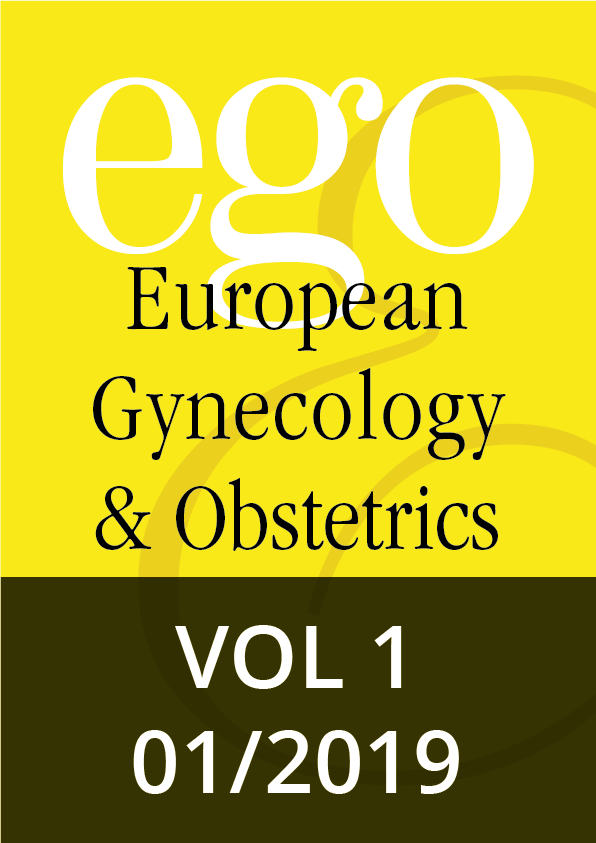In memoriam, 002–002
Editorial, 003–003 | DOI: 10.53260/ego.191011
Reviews, 005–009 | DOI: 10.53260/ego.191012
Reviews, 010–017 | DOI: 10.53260/ego.191013
Reviews, 018–023 | DOI: 10.53260/ego.191014
Case reports, 024–026 | DOI: 10.53260/ego.191015
Case reports, 027–028 | DOI: 10.53260/ego.191016
Original articles, 029–033 | DOI: 10.53260/ego.191017
Original articles, 034–038 | DOI: 10.53260/ego.191018
Original articles, 039–042 | DOI: 10.53260/ego.191019
Original articles, 043–047 | DOI: 10.53260/ego.1910110
Original articles, 048–050 | DOI: 10.53260/ego.1910111
Original articles, 051–054 | DOI: 10.53260/ego.1910112
Original articles, 055–060 | DOI: 10.53260/ego.1910113
Bone density and body weight is associated with MTHFR677 polymorphism in girls with anorexia nervosa
Original articles, 061–064 | DOI: 10.53260/ego.1910114
Depression across menopause: severity, symptoms, climacteric and hormonal background
Abstract
Menopausal depression is a common problem in menopausal women. In this paper we examine the symptoms of menopausal depression in relation to various stages of the menopausal transition, defined according to the STRAW + 10 classification. The present study included 201 women aged 42-65 years admitted to the Department of Gynecological Endocrinology, Poznan University of Medical Sciences, because of climacteric symptoms. The intensity of climacteric symptoms in the studied women was evaluated using the Kupperman index, and depression symptoms were assessed using the Hamilton depression scale and the Beck Depression Inventory. Serum follicle stimulating hormone (FSH), luteinizing hormone (LH), 7ß-estradiol (E2), prolactin (PRL), total testosterone, sex hormone binding globulin (SHBG), dehydroepiandrosterone sulfate (DHEAS), thyrotropin (TSH), free thyroxin (FT4), progesterone and cortisol 8:00 and 16:00 levels were evaluated in all the studied women. We concluded that depression is most frequent in late menopausal transition, and that depressive symptoms are related to hormones during menopausal transition but not during postmenopause.
Keywords: Depression, menopause.
Citation: Slopien R.,Meczekalski B., Depression across menopause: severity, symptoms, climacteric and hormonal background, EGO European Gynecology and Obstetrics (2019); 2019/01:034–038 doi: 10.53260/ego.191018
Published: September 2, 2019
ISSUE 2019/01

In memoriam, 002–002
Editorial, 003–003 | DOI: 10.53260/ego.191011
Reviews, 005–009 | DOI: 10.53260/ego.191012
Reviews, 010–017 | DOI: 10.53260/ego.191013
Reviews, 018–023 | DOI: 10.53260/ego.191014
Case reports, 024–026 | DOI: 10.53260/ego.191015
Case reports, 027–028 | DOI: 10.53260/ego.191016
Original articles, 029–033 | DOI: 10.53260/ego.191017
Original articles, 034–038 | DOI: 10.53260/ego.191018
Original articles, 039–042 | DOI: 10.53260/ego.191019
Original articles, 043–047 | DOI: 10.53260/ego.1910110
Original articles, 048–050 | DOI: 10.53260/ego.1910111
Original articles, 051–054 | DOI: 10.53260/ego.1910112
Original articles, 055–060 | DOI: 10.53260/ego.1910113
Bone density and body weight is associated with MTHFR677 polymorphism in girls with anorexia nervosa
Original articles, 061–064 | DOI: 10.53260/ego.1910114
